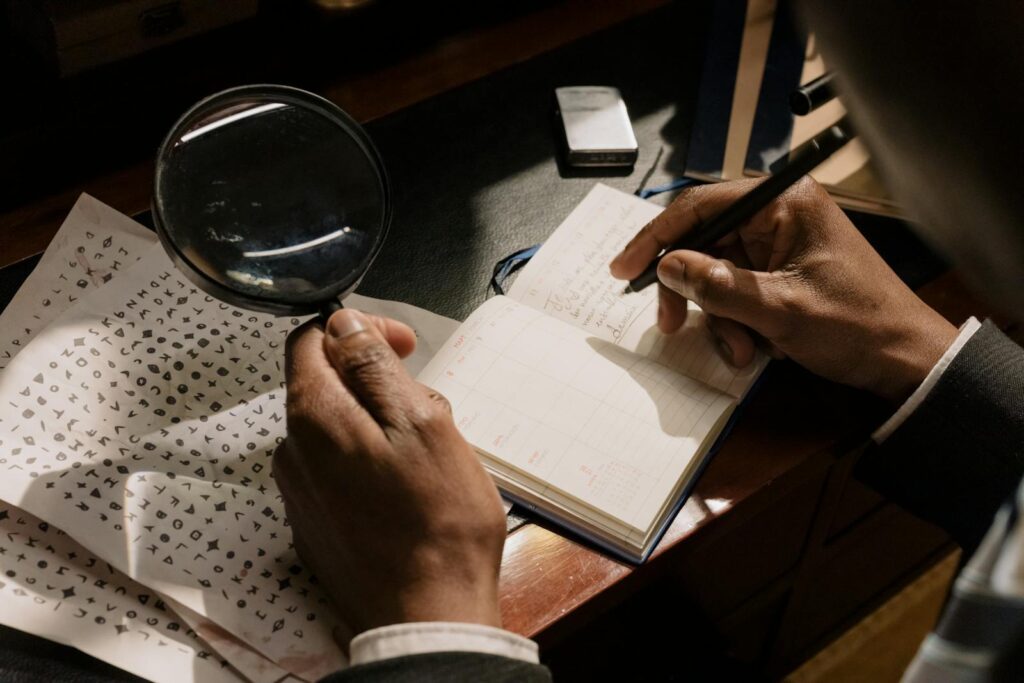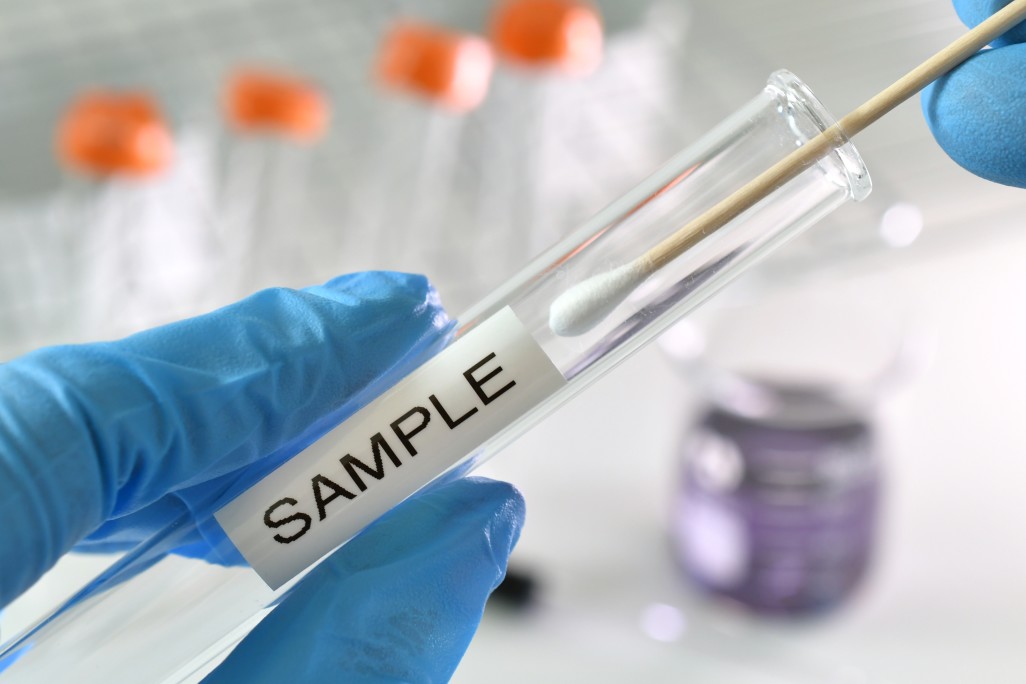Now Reading: Determining Age of a Victim Using Bloodstains
-
01
Determining Age of a Victim Using Bloodstains

Determining Age of a Victim Using Bloodstains
Determining age of a victim using bloodstains
Bloodstain is an important evidence found at the crime scene and it plays very crucial role in forensic investigation. Bloodstain analysis helps in determining the origin, race, sex, state of intoxication, drug use, etc.
The identification of individuals and differentiation between humans based on certain characteristics has always been an important and intriguing aspect of forensic science. In particular, identifying the age of a victim or a suspect is a crucial part of any forensic investigation.1
Extracting phenotypic information (e.g., sex, race, age, etc.) from body fluid traces is highly desirable for criminal investigations. Determining the chronological age (CA) of a blood donor can be helpful to detectives. Here, Raman spectroscopy and chemometrics have been used to analyze blood from human donors, and differentiate between them based on their CA [i.e., newborns (CA of <1 year), adolescents (CA of 11-13 years), and adults (CA of 43-68 years). Determination of chronological age has so much importance since chronological age cannot be determined through DNA profiling unlike sex and race.2 When a sample of blood is illuminated by a laser beam, causing the atoms in the sample to shift to different energy states. As they revert to normal, the electromagnetic radiation they give off allows the investigator to determine the composition and structure of the molecules.3
To differentiate blood donors it is important to note that differentiation must be done based on donor’s chronological age and not based on donor’s biological age. This is because a person’s biological age can be affected by certain factors like health status, diet, physical fitness and more.
Blood found at a crime scene or elsewhere could be used to extract pertinent information. Most often a DNA profile is extracted from bodily fluid evidence and compared to a database, such as the combined DNA index system (CODIS). However, similar to fingerprint analysis, a DNA profile needs to already be present in the database for a match to be confirmed, which severely limits the results of the technique. Not to mention, procuring a DNA profile from any sample is a destructive process. Technology has advanced so that now certain human phenotypes such as eye color, hair color, and skin color can be identified. However, accurate identification (or estimation) of a person’s chronological age is currently not possible from analysis of blood samples by any of these methods.2
Since blood changes throughout the lifespan of the average human, the researchers guessed that certain hallmarks would shine light on a person’s age.4 We all know that human blood differs based on biological sex, chronological age and health status. For differentiating the old and young healthy human donors the comparison of levels of alkaline phosphatase (ALP) using a biocatalytic assay has been shown. Regarding donor age specifically, whole blood from newborns contains fetal hemoglobin (HbF), which differs from adult hemoglobin (HbA) in the volume of red blood cells per 100 mL of blood (hematocrit) and, more importantly, in its structure. Just like HbA, HbF is a tetramer containing four subunits, where both HbA and HbF have two identical α-subunits, but the two βsubunits in HbA are replaced by two γ-subunits in HbF. Therefore, due to its high selectivity, Raman spectroscopy should be capable of differentiating HbF from HbA rather easily.2
In a study, bloodstains from healthy Caucasian individuals consisting of 10 (5 male and 5 female) newborns, 15 adolescent males, and 20 (10 male and 10 female) adults were analyzed via Raman spectroscopy.2
These spectra are very similar, specifically when comparing the number of peaks and their Raman shift (cm-1). This is not surprising, because it is well-known that the peaks in a Raman spectrum of dried blood, analyzed with 785 nm excitation, can be exclusively attributed to vibrational modes of hemoglobin (Hb).5-7 However, variability in the relative intensity and shape of certain peaks exists when comparing the three age groups (Figure 2). This provides good indication that differentiation of bloodstains based on donors’ chronological age should be possible, particularly when incorporating multivariate statistical analysis.2
From Figure 2 it is evident that, for newborn blood donors, as compared to the adolescent and adult blood donors, the relative intensity is (i) higher for the peaks at 320, 375 (metHb marker), 1030, 1570, 1620, and 1667 cm-1 , and (ii) lower for the spectral region 1210−1270 cm-1 (amide III) as well as the peaks around 900, 970, 1370 (ν4), 1450, and 1600 cm-1 (ν(Ca=Cb)).5 These differences are mostly attributed to vibrational modes of the polypeptide portion of Hb, and provide indication that blood composition (and Hb structure) is different for these three age classes. More specifically, these differences can, in part, be attributed to variations in HbA (adults) and HbF (newborns). The peak at 375 cm-1 is a known marker for metHb, which has been identified as being important for determining the time since deposition (TSD) of bloodstains.8, 9 The newborn and adolescent donors had a higher relative intensity for this peak as compared to adult donors. From the inset in Figure 2, it is clear that the standard deviation of both the adolescent and adult donors does not overlap at all with that of the newborn donors, demonstrating significant differences between those age groups. The fact that all bloodstains were analyzed in the same manner (i.e., same amount of time in between sample preparation and analysis), yet there was a difference in the average intensity for the peak at 375 cm-1 between the three age groups, provides evidence that this peak can also help to differentiate the chronological age of the donor in addition to a bloodstain’s TSD. In fact, the variations with respect to donor age seen for the 375 cm-1 peak here are much more pronounced than those we have previously witnessed for bloodstain TSD studies.8, 9
The 1210−1270 cm-1 spectral region is part of the amide III region, where differences in protein secondary structure can be elucidated: specifically α-helix, β-sheet, and/or unordered polypeptide content.10 Intensity variations for this region are not surprising, because of the known differences in the relative amounts of whole blood components (e.g., red blood cells, lipids, proteins, etc.) based on age of a blood donor.11 More specifically, the known structural differences between HbA and HbF are most likely playing a role here. This strengthens the notion that even though the biological differences in whole blood of these donors are relatively minor, Raman spectroscopy is selective enough to probe for them.2
This approach could provide significant benefits to advancing the field of forensic science, specifically serology, to help narrow down a suspect pool or help determine the age of a victim. The additional spectral differences should aid in the enhanced ability to distinguish between donors of closer age ranges so long as the variations within a specific age (or age range) are less than those between ages (or selected age ranges).2
REFERENCES
1. National Law Enforcement Museum. Bertillon system of Criminal Identification. http://www.nleomf.org/museum/news/newsletters/online-insider/november-2011/bertillon-system-criminal-identification.html, National Law Enforcement Museum Insider, 2011, Vol. 3 (9).
2. ACS Cent. Sci. 2018, 4, 7, 862–867 Publication Date:June 20, 2018 https://doi.org/10.1021/acscentsci.8b00198 Copyright © 2018 American Chemical Society
3. https://newatlas.com/crime-scene-bloodstains-age/55150/
4. Alia Hoyt “Bloodstains at Crime Scene Can Tell Age of Victim or Suspect” 22 June 2018. HowStuffWorks.com. <https://science.howstuffworks.com/new-blood-test-pinpoints-age-group-crime-victims-suspects.htm> 8 March 2021
5. Lemler, P.; Premasiri, W. R.; DelMonaco, A.; Ziegler, L. D. NIR Raman Spectra of Whole Human Blood: Effects of Laser-Induced and In Vitro Hemoglobin Denaturation. Anal. Bioanal. Chem. 2014, 406, 193− 200.
6. Muro, C. K.; Lednev, I. K. Identification of Individual Red Blood Cells by Raman Microspectroscopy for Forensic Purposes: In Search of a Limit of Detection. Anal. Bioanal. Chem. 2017, 409, 287−293.
7. Premasiri, W. R.; Lee, J. C.; Ziegler, L. D. Surface-Enhanced Raman Scattering of Whole Human Blood, Blood Plasma, and Red Blood Cells: Cellular Processes and Bioanalytical Sensing. J. Phys. Chem. B 2012, 116, 9376−9386.
8. Doty, K. C.; McLaughlin, G.; Lednev, I. K. A Raman “Spectroscopic Clock” for Bloodstain Age Determination: The First Week after Deposition. Anal. Bioanal. Chem. 2016, 408, 3993−4001.
9. Doty, K. C.; Muro, C. K.; Lednev, I. K. Predicting the Time of the Crime: Bloodstain Aging Estimation for Up to Two Years. Forensic Chem. 2017, 5, 1−7.
10. Rygula, A.; Majzner, K.; Marzec, K. M.; Kaczor, A.; Pilarczyk, M.; Baranska, M. Raman Spectroscopy of Proteins: A Review. J. Raman Spectrosc. 2013, 44, 1061−1076.
11. Altman, P. L. Blood and Other Body Fluids; Federation of American Societies for Experimental Biology: Washington, D.C., 1961.









